Today, it is hard to think of video games without thinking of 3D games. Even though the indie scene has recently brought a revival of the 2D pixel art style, AAA productions still have the 3D environment as their driving force. But what was the first 3D game?
The world of video games has witnessed an incredible journey since its inception, with each passing era introducing new advancements and innovations. All of those have contributed to the huge popularity that video games have today.
Among these milestones, the advent of three-dimensional (3D) games forever transformed the gaming landscape, paving the way for immersive experiences and realistic environments. 3D technology has even transcended video game applications.
In this article, we embark on a historical exploration of the evolution of 3D games, tracing their origins and discussing the game that ignited the revolution.
First 3D game
Before the first 3D game, the gaming industry primarily thrived on two-dimensional (2D) titles. However, the desire to transcend the limitations of 2D graphics and create a more immersive experience drove developers to experiment with 3D technologies.
The concept of 3D graphics in gaming was not entirely new, as early attempts were made in the 1970s with wireframe graphics and vector displays.
Although various early games dabbled with 3D elements, the title that often holds the distinction of being the first 3D game is Maze War.
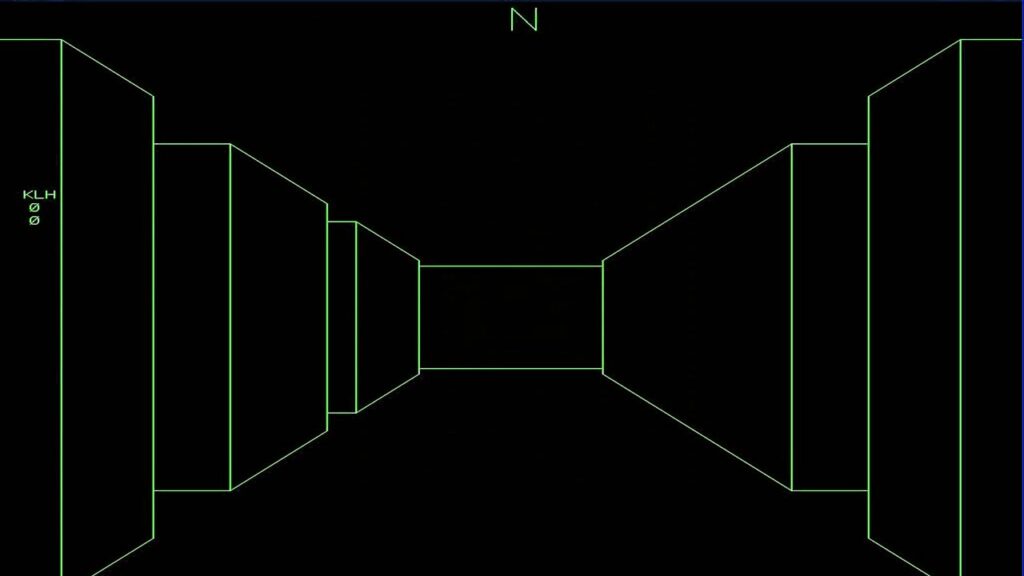
Developed in 1973 by a team of programmers at NASA’s Ames Research Center, Maze War was a multiplayer game where players roamed through a maze-like environment in search of opponents to shoot.
While the game lacked sophisticated visuals by today’s standards, it introduced the core elements of three-dimensional gameplay and multiplayer interaction.
The rise of first-person shooters
Building upon the foundations laid by the first 3D game, Maze War, the 1990s marked a watershed moment in the evolution of 3D gaming with the rise of first-person shooter (FPS) games.
This transformative era witnessed the release of groundbreaking titles like Wolfenstein 3D in 1992 and Doom in 1993, which not only harnessed the power of 3D graphics but also redefined the gaming landscape by delivering unprecedented levels of intensity and immersion.
These games seamlessly integrated fast-paced action, intricate exploration, and a first-person perspective, forever changing the way players interacted with virtual worlds.
Wolfenstein 3D, developed by id Software, was a trailblazing title that pushed the boundaries of what was possible in the realm of 3D gaming.
It introduced players to a fully three-dimensional environment where they assumed the role of a protagonist navigating through treacherous Nazi strongholds.
The game’s visceral gunplay and relentless combat, combined with its immersive first-person perspective, captivated players and set new standards for the FPS genre.
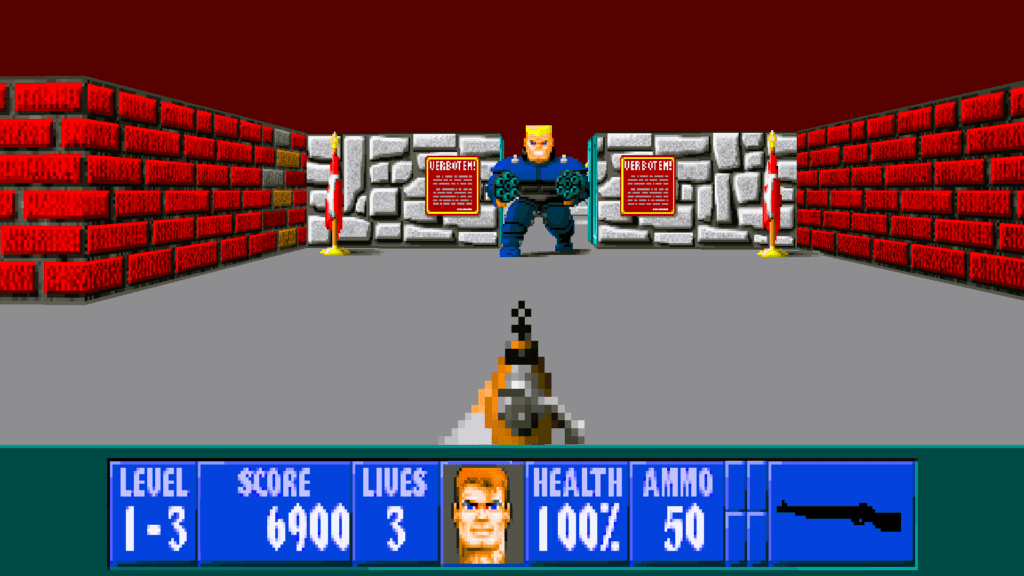
However, it was Doom that truly catapulted the FPS genre into mainstream popularity. Developed by id Software, Doom unleashed a frenetic and adrenaline-fueled experience upon the gaming world. The game transported players to a dark and foreboding Martian moon base infested with demonic creatures.
As players navigated through intricate levels filled with secret passages, formidable enemies, and an arsenal of powerful weapons, Doom became a cultural phenomenon that forever transformed the gaming industry.
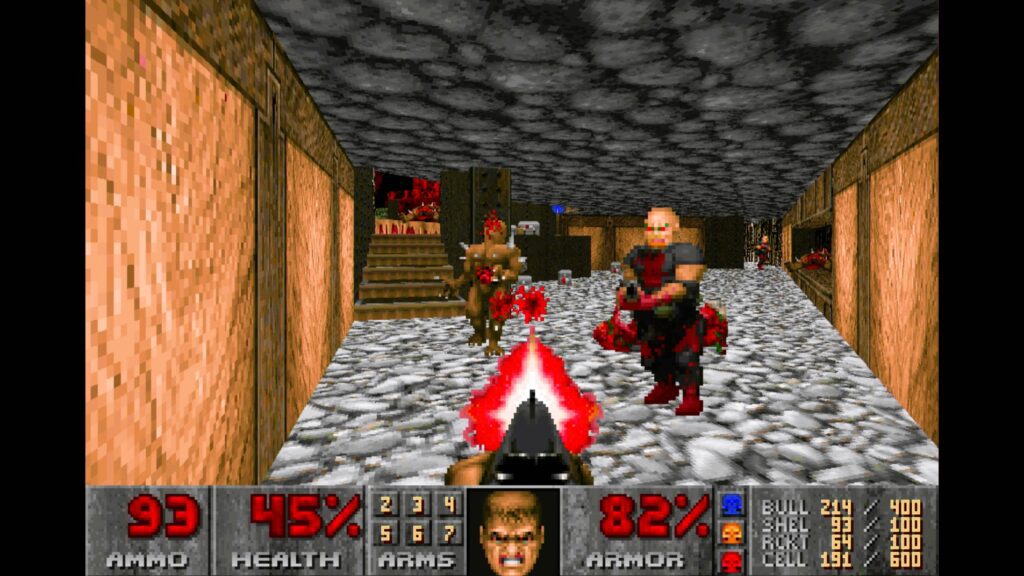
The impact of Wolfenstein 3D and Doom on the gaming industry cannot be overstated.
Their commercial success and critical acclaim paved the way for an explosion of FPS titles in the following years, sparking fierce competition among developers to push the boundaries of 3D graphics and gameplay even further.
The innovations introduced by these games became the blueprint for future FPS classics, such as the Quake series, Half-Life, and Halo, among others, which continue to shape the industry to this day.
The introduction of 3D acceleration
After the first 3D game, the demand for more realistic and visually captivating 3D games surged, and game developers encountered significant technical hurdles that needed to be overcome.
The breakthrough that revolutionized the industry arrived with the introduction of dedicated 3D graphics accelerators, most notably the 3dfx Voodoo Graphics card, which made its debut in 1996.
These dedicated graphics cards were specifically designed to handle the computationally intensive tasks associated with rendering 3D graphics, relieving the burden of the computer’s central processing unit (CPU).
This innovation proved to be a game-changer, enabling smoother frame rates, more complex environments, and ultimately unlocking the potential for visually stunning games.
Before the advent of dedicated 3D graphics accelerators, the rendering of 3D graphics heavily relied on the CPU, which often struggled to deliver satisfactory performance due to its primary responsibilities of managing overall system operations.
The introduction of the 3dfx Voodoo Graphics card and similar accelerators revolutionized this landscape by offloading the demanding graphics processing tasks to a specialized hardware component.
This allowed the CPU to focus on other crucial aspects of the game, resulting in improved performance, faster frame rates, and the ability to render more visually intricate and detailed environments.
Games like Tomb Raider and Quake, released in 1996, took full advantage of these advancements to deliver stunningly realistic 3D environments.
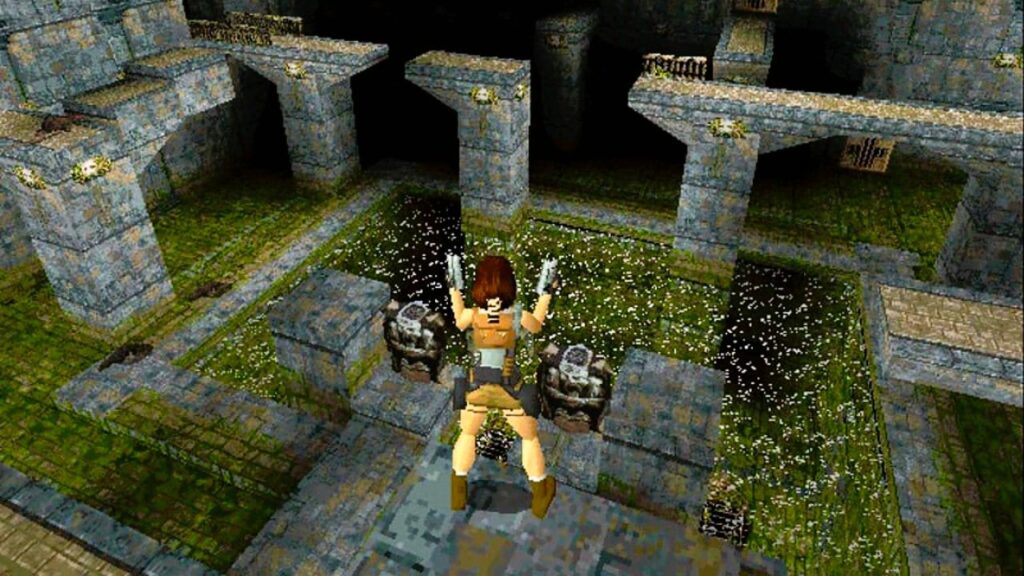
The 3D graphics accelerator not only enhanced the visual quality of the game but also enabled more intricate level design, complex lighting effects, and smooth character animations, all of which contributed to a more immersive and captivating gameplay experience.
The success of Tomb Raider and Quake, among other games of that era, demonstrated the tremendous potential of dedicated 3D graphics accelerators in pushing the boundaries of visual realism and immersive gameplay.
This resulted in a rapid evolution of graphics hardware, with subsequent generations of graphics cards introducing even more advanced features, such as hardware transform and lighting, antialiasing, and improved texture filtering.

The modern era of 3D gaming
The turn of the millennium marked the dawn of a new era for 3D gaming, characterized by refined graphics, diverse gameplay experiences, and powerful hardware. Much different than how things were at the time of the first 3D game.
Console gaming played a pivotal role during this period, with platforms like the PlayStation 2, Xbox, and GameCube offering hardware capabilities that could deliver impressive visual fidelity and physics simulations.
The advancements in technology enabled developers to create groundbreaking titles that pushed the boundaries of what was possible in the realm of 3D gaming.
One of the defining games of this era was Grand Theft Auto III, released in 2001 by Rockstar Games.
This open-world action-adventure game revolutionized the genre by introducing a fully realized 3D cityscape, giving players unprecedented freedom to explore and interact with the environment.
The game’s immersive and sprawling virtual world, combined with its engaging narrative and sandbox gameplay, set a new standard for open-world experiences and captivated players worldwide.

The modern era of 3D gaming witnessed significant advancements in graphical realism, thanks to the increasing power of hardware.
The introduction of more advanced graphics processing units (GPUs) allowed for sophisticated rendering techniques, including realistic lighting models, high-resolution textures, and complex character animations.
Games like Metal Gear Solid 2: Sons of Liberty, released in 2001, and Resident Evil 4, released in 2005, showcased stunning visuals that brought virtual worlds to life with intricate details, realistic environments, and cinematic cutscenes.


In addition to the console space, PC gaming also thrived during this period, with advancements in graphics technology pushing the boundaries even further.
The advent of DirectX 9 in 2002 introduced advanced rendering capabilities and shader technology, enabling developers to create visually impressive games with complex effects and realistic physics simulations.
Titles like Half-Life 2, released in 2004, capitalized on these advancements, delivering an immersive and visually stunning experience that pushed the boundaries of storytelling in gaming.
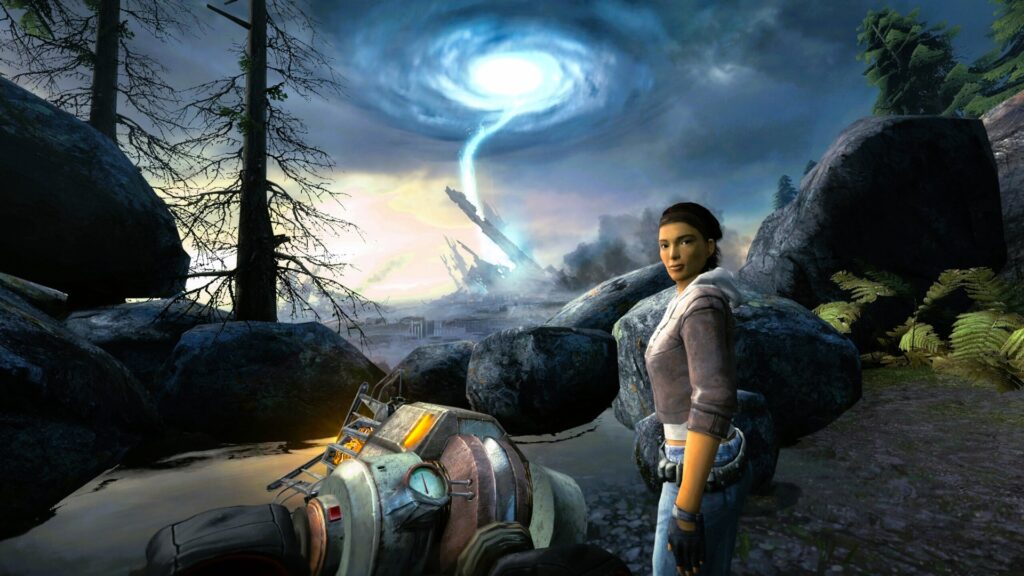
Super Mario 64: Pioneering the Three-Dimensional Gaming Frontier
In the realm of gaming history, Super Mario 64 stands as an iconic milestone, marking the transition to the three-dimensional video game era. Developed by Nintendo, Super Mario 64 wasn’t just the first game to fully immerse players in a three-dimensional world; it redefined the gaming landscape, pioneering techniques that would shape the future of interactive entertainment.
Unlike its predecessors, which relied on 2D sprites and simple scaling tricks, Super Mario 64 leveraged the power of Nintendo’s Nintendo 64 console to render polygonal environments with depth and detail previously unseen in gaming.
Released in 1996, this groundbreaking title allowed gamers to explore a vast three-dimensional world, featuring innovative gameplay mechanics and stunning visuals for its time. Super Mario 64 wasn’t just a game; it was a technological marvel, showcasing the potential of 3D gaming and setting the stage for generations of immersive experiences to come.
The future of 3D gaming
Today, 50 years after the first 3D game, 3D games continue to evolve at an astonishing pace.
Technological advancements, such as improved rendering techniques, higher display resolutions, and virtual reality (VR) technology, have further enhanced the immersion and realism of gaming experiences.
Games like The Legend of Zelda: Breath of the Wild and Red Dead Redemption 2 have raised the bar for open-world exploration and narrative-driven gameplay.

Working in the game development area involves being ready for all these constant changes and having a good eye for what the future holds.
We here at Main Leaf know that very well, as we’ve been working in the area for the past 12 years.
Get in contact to know more about our products and how you can start working with us.

